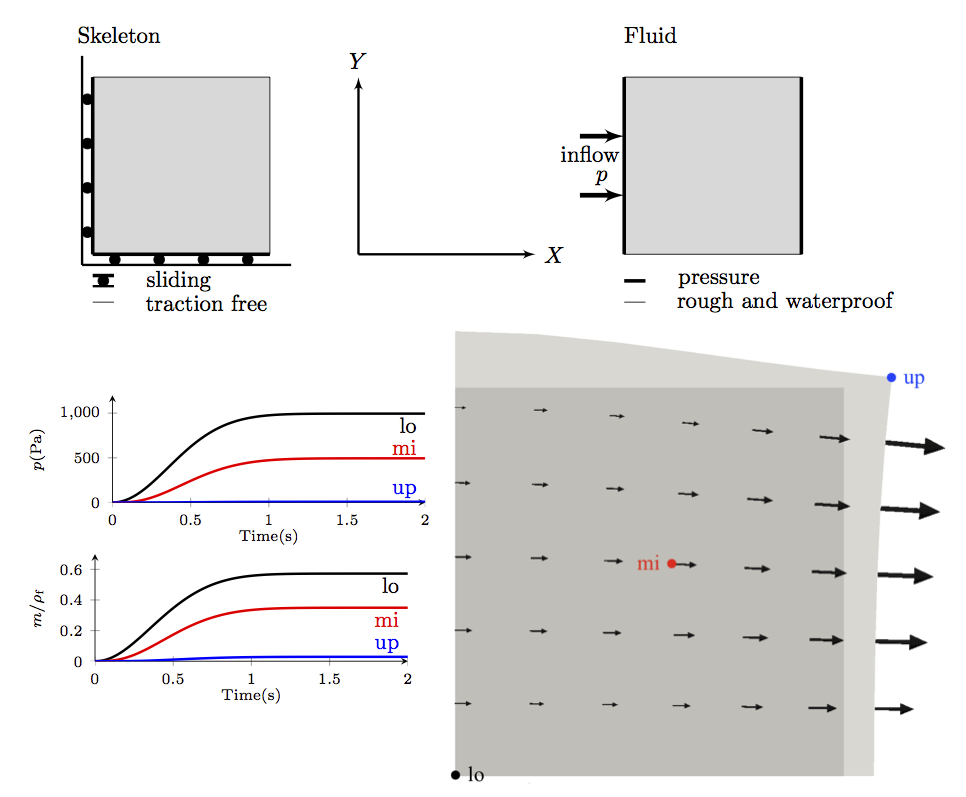Section: New Results
Numerical Analysis
Dirichlet-to-Neumann operator for diffraction problems in stratified anisotropic acoustic waveguides
Participants : Antoine Tonnoir [correspondant] , Sonia Fliss [Poems team] , Anne-Sophie Bonnet-Ben Dhia [Poems team] .
In this work, we are interested in the construction of a Dirichlet-to-Neumann operator for the diffraction problem in stratified anisotropic acoustic waveguides. The key idea consists in using an adapted change of coordinates that allows to recover the completeness and the orthogonality of the modes on “deformed” cross-sections of the waveguide. Thus, we can properly define the diffraction problem and construct transparent boundary conditions to reformulate this problem in a bounded domain. Using classical arguments we easily prove the well-posedness. The method has also been implemented in a C++ code and has been validated.
Fourth-order energy-preserving locally implicit time discretization for linear wave equations
Participants : Sébastien Imperiale [correspondant] , Juliette Chabassier [MAGIQUE-3D team] .
In collaboration with Juliette Chabassier, we have constructed a family of fourth-order implicit-explicit time schemes for linear wave equations. Our application is the simulation of elastic waves propagation in a locally stiff medium. The domain of propagation is decomposed into several regions where different fourth-order time discretization are used, chosen among a family of implicit (for the stiff regions) or explicit fourth-order schemes. The coupling is based on a Lagrangian formulation on the boundaries between several non-conforming meshes of the regions. A global discrete energy is shown to be preserved and leads to global fourth-order consistency in time. Numerical results in 1D and 2D illustrate the good behavior of the schemes and their potential for the efficient simulation of realistic highly heterogeneous media for which using an explicit scheme everywhere can be extremely penalizing. Accuracy up to fourth-order reduces the numerical dispersion inherent to implicit methods used with a large time step, and makes this family of schemes attractive compared to second-order accurate methods.
Numerical methods for poromechanics: Applications to cardiac perfusion
Participants : Bruno Burtschell, Dominique Chapelle [correspondant] , Philippe Moireau.
|
We have previously formulated a rather general modeling framework of poromechanics – formulations that combine solid and fluid components to represent the behavior of a porous medium – to take into account large deformations and rapid fluid flows, see [6] . This allows to consider, in particular, the application of blood perfusion within the cardiac tissue, which features these specific complex phenomena, out of the scope of classical poromechanical models. One of our major objectives now, within the PhD of Bruno Burtschell, is to propose and analyse some associated relevant numerical schemes.
Some existing algorithms of fluid-structure interaction, with which our poromechanics formulations feature deep similarities, have been implemented – in FreeFEM++, both in axisymmetric configuration and in 3D – and compared. Their numerical and theoretical analysis – consistency, convergence – has been performed. Then, the adaptation of these algorithms to our poromechanics formulations enabled us to propose a time discretisation well-fitted to our framework, and to present its energy stability analysis. Spatial discretizations issues have also been specifically addressed, based on a complete analysis performed on a linearized problem, in order to guarantee pressure stability – via the selection of adequate inf-sup-compatible discretization spaces – including when the solid constituent is nearly or fully incompressible. Implementation and detailed numerical validations of these schemes have ben performed. Integration into FELISCE (“HappyHeart” module) in 3D, and into a reduced model of cardiac cycle to take into account myocardium perfusion, are ongoing work.



